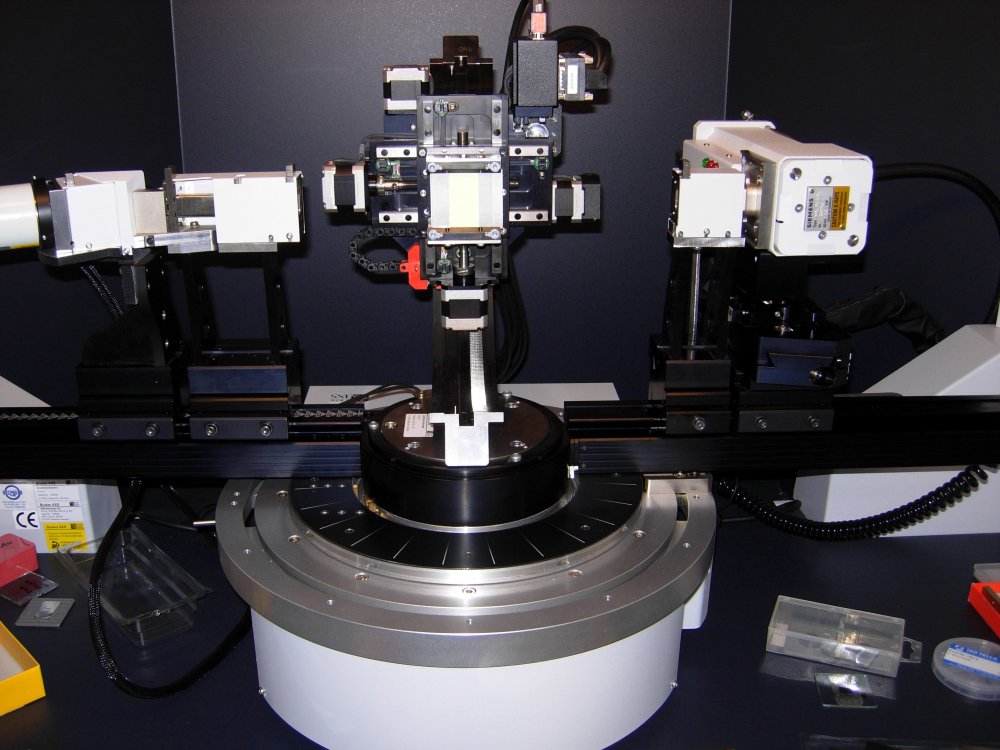
XRD Bruker D8 Advance.

Centric Eulerian cradle with sample holder, anode and NaI scintillation detetector.
Technical data
X-Ray Source
2.2 kW Cu long fine focus ceramic X-ray tube
1.8 kW Co long fine focus ceramic X-ray tube
The running conditions for the X-Ray tube are 40 kV and 40 mA, the power supply controls these with a stability of better than 0.01% for the high voltage and 10% of the variation of the supply for the current.
Goniometer
Geometry: Brag-Brentano (theta/2theta, theta/theta)
Neasuring circle diameters: 435, 500, 600 mm
Operating position: Horizontal
2theta circle: -4º to 170º
Reproducibility +/- 0.0001º
Centric Eulerian Cradle
Chi circle: -11 to +98
o
Phi circle: unlimited
X translation: +/- 40 mm
Y translation: +/- 40 mm
Z translation: 2 mm
Sample load: 1 kg
Sample height: 40 mm
Detector
The detector is a NaI dynamic scintillation detector with a maximum count rate of 2 x 10
6 s
-1 (although it should not be exposed to in excess of 5 x 10
5 s
-1 for periods longer than about 1 second). A computer controlled absorber is mounted directly in front of the detector and is used to attenuate the beam by about 2 orders of magnitude. To change the angular resolution several slits (0.05 to 2 mm) are available to be placed in front of the detector, as are a set of Soller slits to allow for small samples. Attenuators made of Cu, Fe and Ni are also available and can be manually placed in the beam, by inserting them into the slit holders in front of the detector. The detector electronics are capable of a count rate up to 3 x 10
7 s
-1.
Secondary Graphite Monochromator
Coling System
Cooling water minimum flow rate: 3.6 l/min
Pressure of cooling water: 4 to 7 bar
Chiller: ATC KT1 (1 kW) and Danfoss heat exchanger (4.5 kW) (home made solution)
Software
The software suit is all windows based, and enables the user to both acquire and analyse data.
Automated data acquisition
Analytical Capabilities
Phase identification - Qualitative with Search-Match programs
Quantitative analysis - Rietveld method
Residual stress
Texture analysis (Pole figures and orientation distribution function)
Retained austenite analysis
Carbide phase analysis in steels